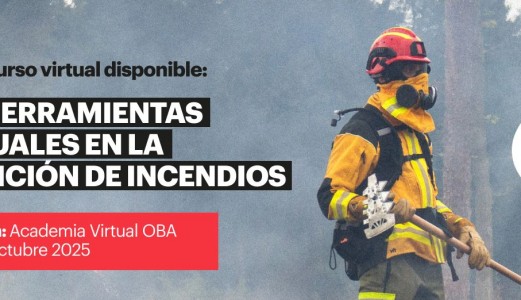
vft: Your relationship with the wildfires started prematurely.
A.T.: 1994 was a very busy wildfire year throughout the Mediterranean arc. Many hectares were burned. I was 10 years old and I was spending the summer in a country house where my grandparents worked in the town of Bocairent, in Spain. I was with my cousins playing around the house when we started to see a lot of smoke. The flames were getting closer and we decided to flee along a forest track, which was full of vegetation. As we were leaving, I saw a Russian plane crash, the Antonov with six crew members. Almost all of them died in the accident. Now that I have knowledge of forest management, I realize that we could have been in the newspapers! Instinct at that moment made us flee, but the safest thing would have been to confine ourselves and perform a self-protective maneuver. We had luck. That situation marked me.
vft: And you decided to study forestry engineering.
A.T.: Yes. And while I was studying, I started as a volunteer firefighter.
vft: You've been through almost every position in a fire service ...
A.T.: In 2007 I joined as a reinforcement in the Valencian Community forest fire brigade in the summer campaigns. And in 2010, I became a technician for a helicopter transported unit in Guadalajara. Then I returned to my homeland and acted as a communications operator, a fire engine driver, a specialist, a unit chief, and worked for a time for the fire station. It was only a few months. Dispatching media and receiving notices. This last function was not my favorite, because I could not take an active part in the interventions, but it gave me a global, comprehensive and strategic vision of emergencies. I learned how information should be transferred from the units to the headquarters. I understood the importance of consistency and understanding the needs of all parties. When you are in an emergency, you sometimes have very central vision. Realizing that there are many ways to read the same situation generates empathy and respect for the work of others.
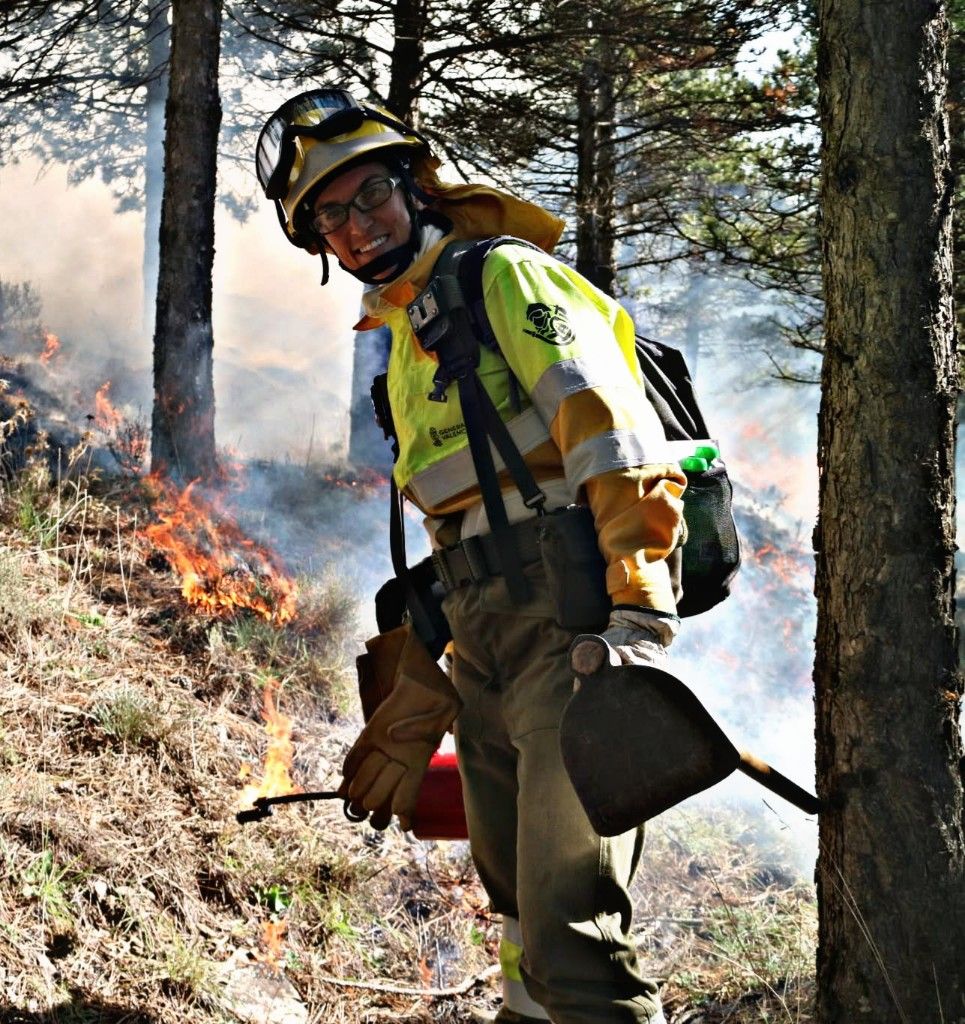
vft: What has having gone through these different stages contributed to you?
A.T.: Security, knowledge, adaptability to new challenges and requirements.
The episode I lived through during my childhood marked my professional choice; not only as a forest firefighter, I was also aroused by the concern to transfer knowledge, to learn from mistakes to avoid tragic endings.
vft: …
A.T.: In 2011 I began to combine training with fire prevention and extinguishing management, giving courses and workshops. A few years later, I was given the opportunity to work as a trainer at IVASPE (Institut Valencià de Seguretat Pública i Emergències). And in 2017 I joined the technical training body of the Forest Fire Service in Valencia, which is where I am now. Leading the formation of the device you were born into is a wonderful experience.
vft: Have you noticed an increase in interest in training?
A.T.: Without a doubt, and especially for practical skills. Training is the foundation of education and learning. We provide knowledge and train skills. We try that the devices are not limited to the achievement of objectives, but that they are part of something bigger, of a team, that they are integrated.
vft: Have you noticed an evolution in the teaching methodology and in the discourse on how to direct prevention and extinction operations to adapt them to the new generations of fires?
A.T.: Yes. I remember that, in college, when I studied the subject of Forest Fires, the teaching was based on the model of extinction “all against the fire”. The professor who taught that class, today holds a position of responsibility in the Valencian Community and has also absolutely changed his discourse. We have all adapted to what we have been learning. We have been living situations and assuming reality. Today we talk about pyro ecology, fire regimes, ecosystem response. Topics that were previously unimaginable are taught. Being a trainer requires you to be up to date and update your knowledge.
vft: Do you monitor what happens in other countries?
A.T.: We try. Sometimes the immediacy and abundance of information on the networks is overwhelming. The concept of infotoxicity that Marc Castellnou talks about is real. But we try to keep up to date on congresses, we observe how extinction and management strategies are adapted in other countries and we try to learn from it, adapting it to our realities.
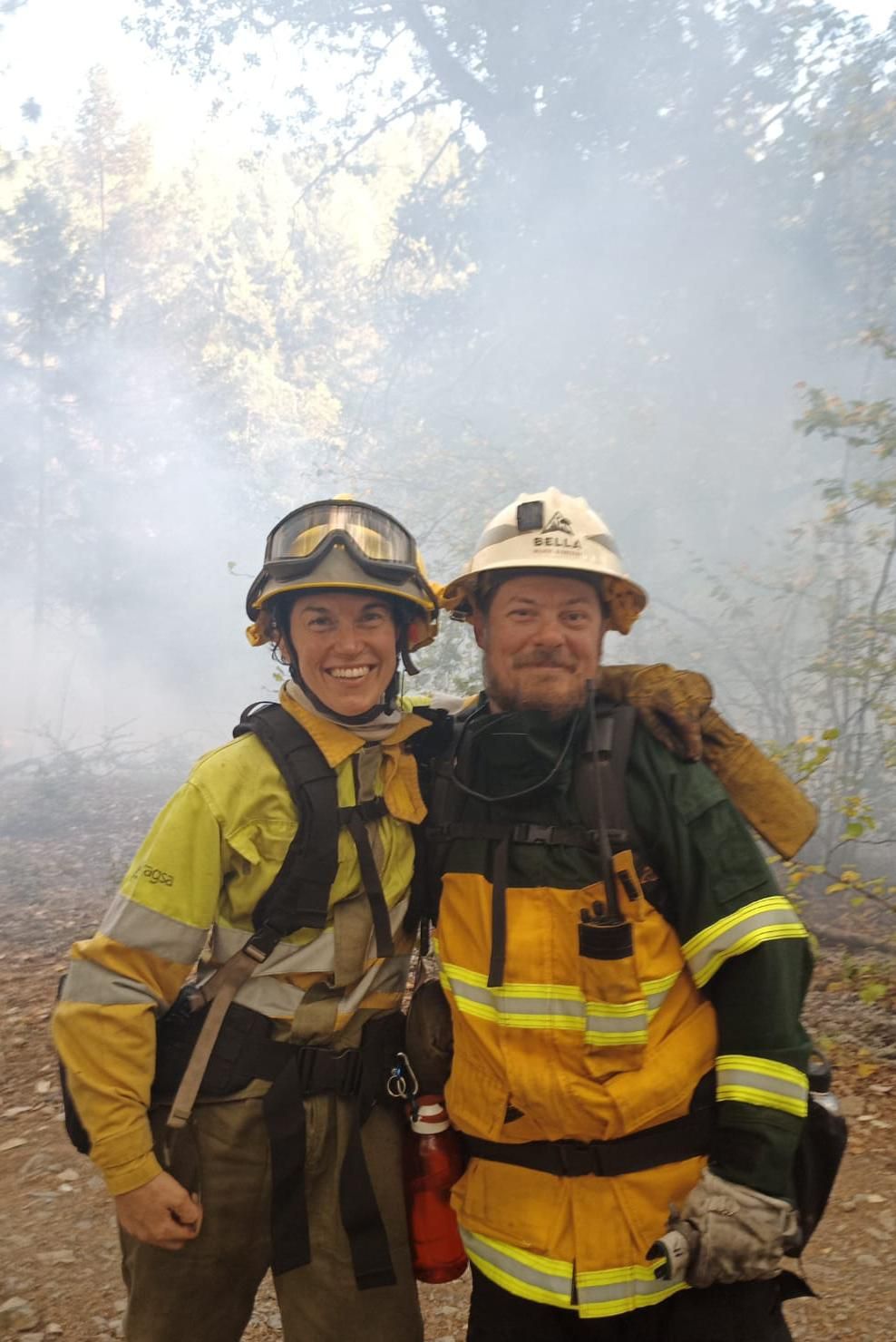
vft: Any class anecdote?
A.T.: One day, talking about pyro ecology and land management, a student asked me for permission to ask a difficult question. I wanted to know why, if all professionals are so clear that landscape management is the key to fighting large forest fires, policies are still so focused on extinction.
vft: and what did you answer?
A.T.: “If tomorrow you are in a position with decision-making power, I don't want you to make the decisions that I would have made, but I do want you to question what we have been doing and how we have done it so far. Value different ways of doing things ”. That is my job with training. We train current and future generations of emergency services. We are sowing. Creating awareness is nice.
vft: In its proper measure, should knowledge about landscape management be extended to society?
A.T.: We should inform and train our neighborhood communities more. We forget the past too soon. We have already had complicated entrapment situations in the urban forest interface. It happened in the Pedrograo fire in Portugal, it happened in Greece. We know it will happen again, but not when or with what intensity. Fuel and risk management through prevention is essential, for example with prescribed burning, which is a multi-agency tool (a multi-agency exercise for coordinated work) and a tool for learning from fire from controlled manner, under specific parameters and objectives.
vft: There is no awareness of risk at the social level.
A.T.: Once a colleague participated in a conference in a town in the Valencian Community and, to raise awareness, he taught them the history of fires. At the end of the day they realized that the entire municipal area had burned down sooner or later. We live in an environment where fire is part of the ecosystem and it is something that we cannot deny. Society must understand that it must facilitate the situation and the work of the extinguishing devices, being aware of the risk they add and acting accordingly.
vft: How are the fires in the Valencia, are they changing?
A.T.: Most of our fires are near-misses, but the day there is a risk window, what are known as large forest fires (GIF) occur. We have few GIFs that burn a lot of surface and, on certain occasions, there are simultaneous fires. So, in terms of generations of fires, they have changed. The socioeconomic model has also affected. The rural exodus, the abandonment of the fields of crops and the forest exploitation has produced that the forest masses have been growing and deteriorating their quality. Fires are changing because their environment of spread has changed. In the Valencian Community we often speak of the paradox of extinction.
vft: What does it consist of?
A.T.: We tend to have very small fires and the response of the fire services is so good, that they remain small fires, that manage small land and very little fuel. Over-protectionism is misunderstood. It's like not vaccinating. As long as the disease does not come, nothing happens, but the day it arrives, your defenses are low and you expose yourself, the harmful potential is greater.
vft: A very clear imagry
A.T.: The available fuel in the land, which will be greater or smaller according to various factors: annual history of rainfall and temperatures, forest management, diseases, pests, etc. The modification of the climatic conditions means that the forest masses do not grow in the same conditions in which they were born, or they do so out of season. All this is something latent, waiting for the right moment to arrive (a few days in the west, strong gusts of wind or a dry spring that causes water stress), to generate large fires. Sometimes society does not understand that there are fires beyond the extinguishing capacity. Just as maritime rescue teams cannot go out on days when there are waves of X meters, it should be understood that the extinguishing devices have limitations and cannot be exposed to any risk. For those GIFs, the strategy is another.
vft: Don't our forests have the vegetation that they should have?
A.T.: The vegetation that we have was born or was repopulated under conditions, which are not exactly what we have now, the same 50 or 100 years ago (depending on the species). It is the vegetation that touched then. The climatic environment has changed: average temperatures have risen, well-distributed rainfall has decreased (it is concentrated in very specific times, through extreme rain episodes caused by the climate crisis). Our forest stands are adapted to something that is no longer happening. In addition, we have eliminated a natural disturbance that is fire in the ecosystem. We are not managing fuel; neither naturally, with fires, nor artificially, as was done in the past, with livestock, harvesting, etc. We have abandoned the forest environment and left it to its own devices.
vft: What was the worst fire year you remember?
A.T.: In 94 almost 140,000 ha were burned. In Valencian Community. I did not experience it that year since the extinction operation because it was very small. For me, the worst year I remember was 2012. If you entered a fire service after the 94 you were considered a rookie. Today, those of us who lived the 12 has also gained some respect (she laughes).
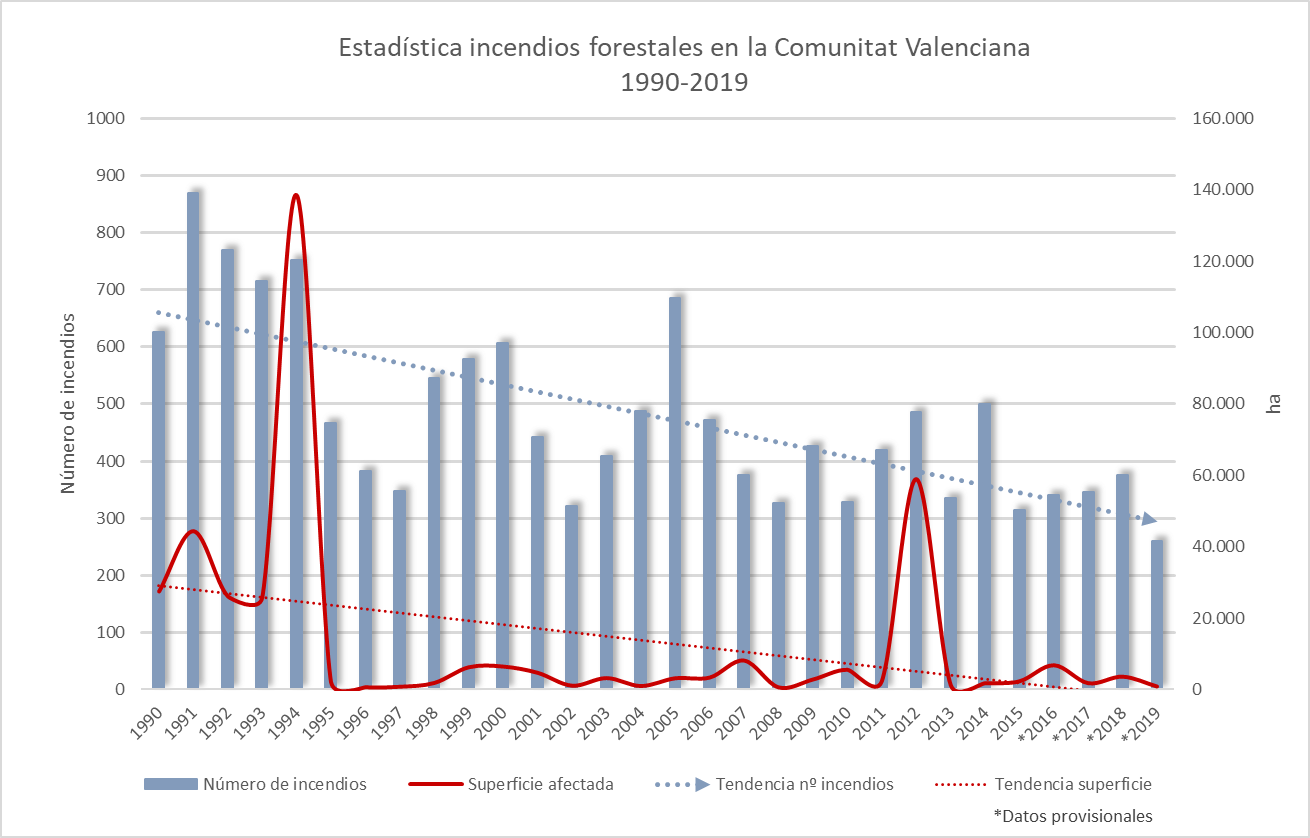
That 2012 we started the campaign on June 1 with a 600 ha fire. Returning from that service, I remember a colleague joking, "if we had one of these every month, many would rethink the work." On June 12 we had one of 1,300 ha, on June 28 another in Cortes de Pallás of 30,000 ha and the next day one in Andilla of 21,000 ha. In August, Torre de les Maçanes, about 700 ha, where two companions also died. In September we continued with another fire in Chulilla of 7000 ha ... it was a very complicated year. I also remember that on days off I could not rest to recover physically or mentally. I was a unit manager. Everything they taught me about risk prevention and safety at IVASPE, that year I forcibly internalized it. It was then that I realized the importance of telling it and teaching it to future generations of firefighters.
vft: Tell us about an operation that has marked you.
A.T.: Mine, mainly. In 2012, in the unit that I led, we had never had a fire engine before and we worked with hand tools. On June 1, they assigned us the truck and with that new tool we went to the Benagéber fire, in the interior of Valencia. I remember having a strange feeling, like something was going to happen. A bad feeling. I am always hungry and that day I had a closed stomach. What was actually happening is that I was detecting all the alarms that I had been taught in the formative theory, but I was not yet aware that I was seeing them. A fire situation occurred in an area outside the perimeter, which evolved towards our position, but we knew how to anticipate it, we knew how to see it. In fires, the OCELA must always be applied, the escape route procedure, towards a safe area, observations, communications and anchoring. That day we put it into practice. We knew how to see the indicators. Escape route and we all went outside. Immediately there was an entrapment. Other units suffered poisonings, some burns. We learned a lot. We learned the importance of stopping, looking, thinking and valuing. The phrase “when you are on fire you are not wasting 5 minutes, you are gaining them”. It is what is now called Situational Awareness and that at that time we did not know. I remember the restlessness of thinking: "I must return to my position because I am not doing my job." Despite having a lot of training, he had that feeling. That is why I always advocate that training be by discovery.
vft: Learning from mystaking.
A.T.: Exactly. And it is necessary to try that the errors take place in simulated or controlled situations, so that the teams do the learning in a safe way. Because the best possible learning is that it happened to you, that you lived it. At that moment, in that operation, the whole theory took shape for me. I try to teach by letting the students make mistakes, because if you correct before they act, they don't learn. It takes time, it is not a training to use, but the result is very positive.
vft: What lesson did you learn from that operative?
A.T.: I learned that teamwork on fires is not a choice, it is something that is inherent. You do not work individually, it is clear that everyone has their functions, but success is in the team working in a coordinated way. Training is essential. "Only he who trains for the impossible is prepared for the most probable." (That is, prepare for what you do not want to ever happen, because only then will you be prepared for what is going to happen). Motivation is also essential. It is when the best results are born and you give your best. That year he had a great team.
vft: What should be the natural evolution of the operatives?
A.T.: Right now the work is based a lot on direct attack, close to the perimeter and in the initial phases. When intervention requires an expanded attack, we need a more strategic, overall view. In order to act in advance, it is necessary to recognize the terrain and make use of the existing infrastructures as prevention strips, act in areas with lower fuel loads, at management points. If we want to face the fires that are coming, we can no longer just work on extinction. We need the media to be able to anchor work, to execute against fires, widening burns. We need infrastructures on the ground to launch certain maneuvers, work safely and that requires a vision and joint work from prevention and extinction to be able to manage the territory.
vft: You were working in the United States with the Karuk tribe. How was the experience?
A.T.: Well, it wasn't work, I went on vacation, pyro-vacation. We were participating in a TREX (a training and exchange exercise) in northern California. For three weeks, we worked with the management staff of the Karuk and Yurok, who are Native American tribes in the area. I remember my first contact with them. We arrived in a 4x4 at night and appeared at the home of Margo Robbins, one of the women who leads a council group with fire, the Cultural Fire Management Council (CFMC). Women have a very important role there.
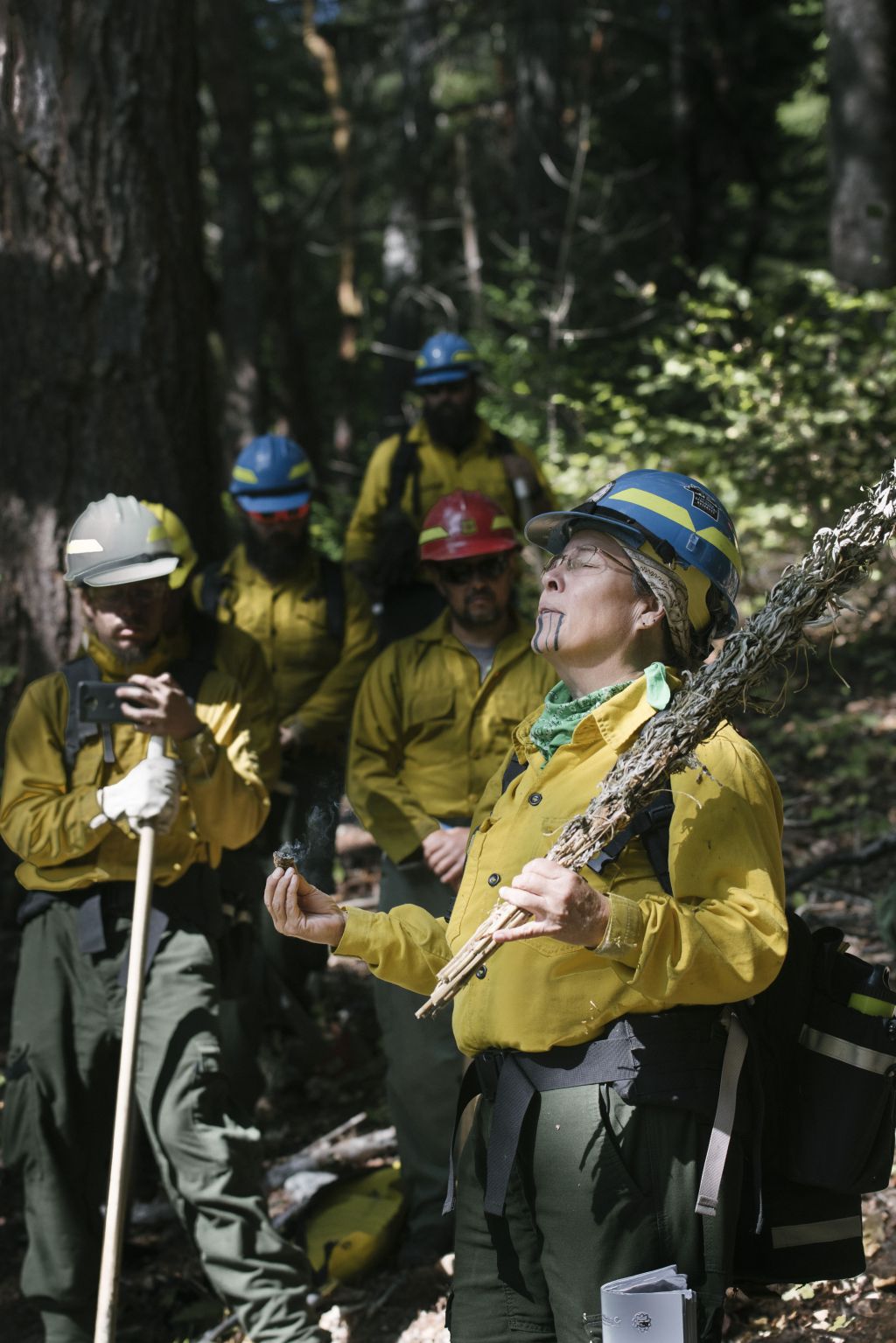
Otro día, recuerdo que estábamos en una zona de abetos y nos dijeron que debíamos entrar con la motosierra para abrir luz y posteriormente realizar quemas. Yo pensaba: “¡si me vieran en Comunidad Valenciana talando un abeto de metro y medio de diámetro nos encerraban en prisión!”. Pero allí eran una especie que había que controlar porque el bosque estaba cerrando todos los páramos y debían abrir zonas de caza, no solo para los humanos, también para otros animales que necesitan entornos abiertos para hacerlo.
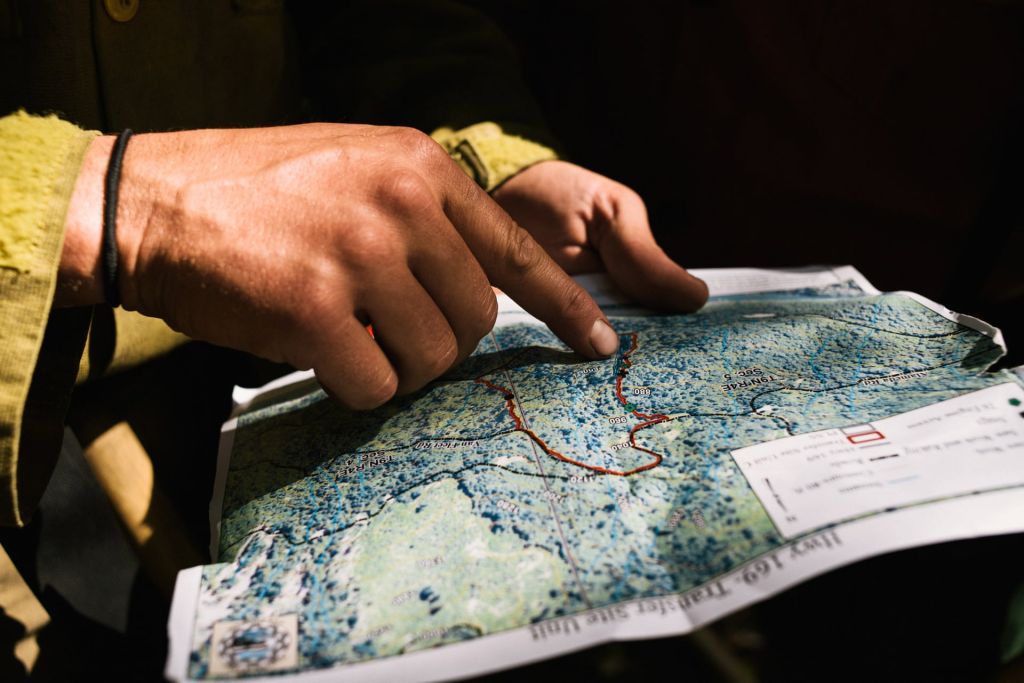
vft: ¿Qué te sorprendió más de este intercambio?
A.T.: Me impactó cómo tienen interiorizado que el fuego forma parte de los ecosistemas y que están destinados a convivir con él. Saben que ir en contra de las realidades y de lo natural conlleva unas consecuencias que asumiremos todos. Allí todavía se realizan muchos trabajos manuales, ligados a las tradiciones culturales. Son muy conscientes de que los bosques deben quemar a ciertas intensidades para que puedan abastecerles de ciertas plantas que usan para cocinar, para dar de comer al ganado, para fabricar cestas de bebés o con fines medicinales. Estaban muy agradecidos de que fuéramos a ayudarles a quemar sus tierras, porque la administración de allí permite que se hagan tareas de gestión, pero no disponen de personal para hacer este tipo de ejercicios y, además así compartimos experiencias.
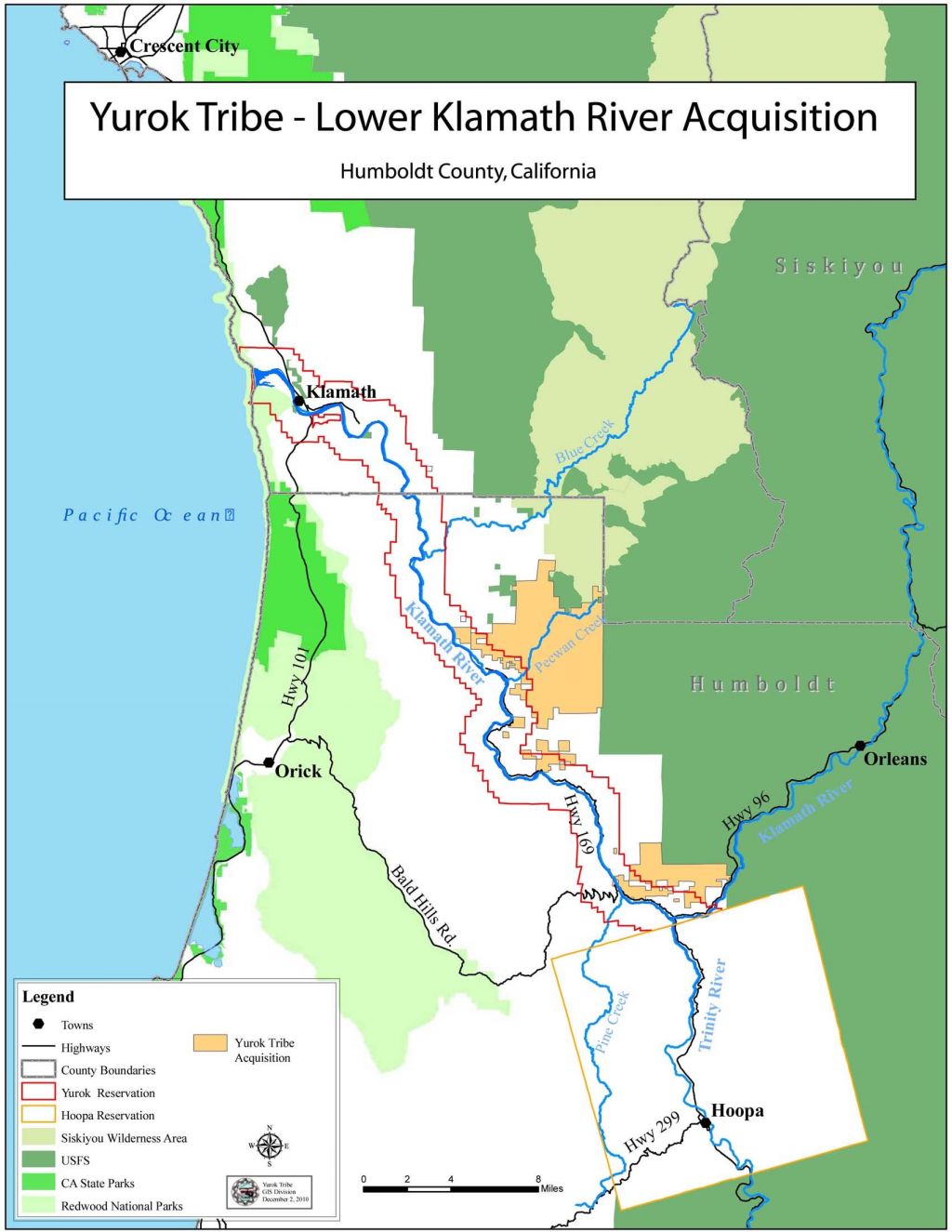
vft: What do they do differently and should we implement here?
A.T.: Yes. Grades through hours of practice. There they have a hierarchical system, the ICS, Incident Command System. It is a system in which type fires are categorized, analyzing and structuring the complexity that each operation may have. Based on these parameters, they define what type of personnel is authorized to intervene in each type of fire and what tasks they will be able to carry out. It is not decided only based on the degree they hold or the position they occupy. The possibility of participating is given by the experience, attitude and aptitudes developed in joint exercises (it is necessary to add hours of training, which are also analyzed by evaluators). Before participating, we did a series of tests that accredited us to be part of the structure there. The participation and the accumulated experience serves for the development of new tasks. It seems like a success to me because it is a way of valuing people for what they can really offer. It is motivating and it is not limiting. There are no glass ceilings. You can be what you want to be. You just have to show desire, commit and invest time.
vft: What would you say to someone who is considering to take the same path?
A.T.: Wanting and desiring something is the energy necessary to be able to do it. The pirofriki world or the fire family are full of great professionals, people who love and care for the natural environment. Transcendental experiences are lived. It is a very vocational sector in which very interesting exchanges take place. If I were to start over, I would choose the same path.





